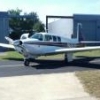Gear warning system
-
Members Online
- PeytonM
- Ron McBride
- good2eat
- jonhurst66
- wburger1
- kortopates
- DanM20C
- neilpilot
- AndreiC
- tcal780
- Aerodon
- 201er
- Dialed In
- eman1200
- jcolgan
- mgtrevor
- Meshach
- thomas1142
- Fredo0709
- ckb
- shawnd
- Echo
- Lptoro
- Ryan ORL
- jeff s
- mousseauphl
- Sabremech
- pkellercfii
- gamefreak32
- CaliDreaminMr
- Ulysse
- M20S Driver
- McMooney
- ed


Recommended Posts
Join the conversation
You can post now and register later. If you have an account, sign in now to post with your account.